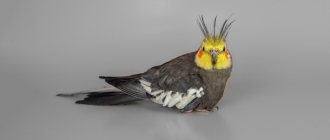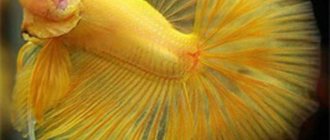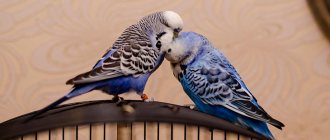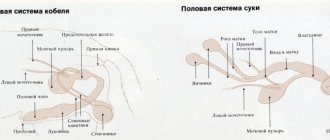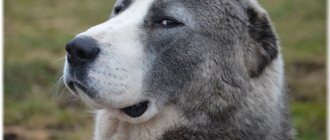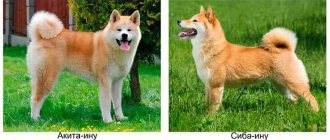How to take care of young animals
Pheasant chicks need high protein feed in the first few weeks. When breeding poultry, you must adhere to the rules for caring for young animals. The principles are as follows:
- ensuring space in the enclosure, for 30 chicks there should be at least 1 sq.m. space;
- maintaining a temperature of at least 28 degrees in the first 3 days and not below 20 in subsequent weeks;
- proper feeding of young animals (up to the age of 2 months, chicks should be given boiled eggs and chopped greens, and then gradually transferred to adult food).
By the age of six months, pheasants are already suitable for slaughter or breeding.
What to feed
Hunting pheasants have an enviable appetite, so they quickly gain weight. One adult animal receives 75 g of high-quality and nutritious food per day. During the nesting season, the daily norm increases to 80 g. The diet includes products that meet the natural needs of the bird and will not cause disturbances in the functioning of the digestive and excretory systems.
Pheasants need high-quality and balanced food. The basis is corn, peas and wheat. In summer, birds add variety to their diet by eating insects and worms. Thanks to animal food, they gain weight faster, and the taste of the meat improves. Birds have a particular weakness for Colorado potato beetles. According to experienced farmers, there are no problems with insect pests in areas where pheasants are found.
Birds need fresh greens. In the area where they are kept, it is advisable to plant grass, for example, plantain or nettle. Be sure to include chopped vegetables, fruits and berries in your diet. In winter, to maintain immunity, fish oil, feed yeast, meat and bone meal and fish meal are added to food.
Pheasants also need mineral elements, so they are provided with chalk, charcoal, shells, and crushed eggshells.
How to properly collect pheasant eggs
There is no need to disturb the female sitting in the nest.
The purpose of breeding pheasants is not only to obtain dietary meat, but also eggs. However, these products must be removed from the nests on time, observing the following rules:
- collect eggs in the morning or afternoon, while the birds are eating;
- Before collecting, wash your hands thoroughly to prevent germs from entering;
- store products at temperatures from 5 to 12 degrees, in dark places with air humidity no higher than 70%;
- If the eggs are very dirty, you should not rub them with a rag; it is better to rinse them in a weak solution of potassium permanganate.
It is necessary to follow these rules in order for the products to be well preserved. If the collection is not made for sale or consumption, then you should know that in addition to keeping pheasant eggs in an incubator, turkeys or ornamental chickens can hatch.
Pheasant feeding
In the wild, under natural conditions, the pheasant's diet mostly consists of plant foods. To satisfy hunger, pheasants eat plant seeds, berries, rhizomes, young green shoots and leaves. Animal food is also important for birds; they eat worms, larvae, insects, and spiders.
A characteristic feature of these birds is that from birth the chicks feed exclusively on animal food, and only after some time they switch to plant food.
Pheasants get their food on the ground, raking fallen leaves, soil and grass with their fairly strong paws, or they peck food from plants at a small height from the ground.
Breeding Features
Caring for chicks
All species and breeds of pheasants reproduce very well in captivity. But to obtain offspring from these birds, an incubator is needed. In order for a pheasant to sit down and incubate her eggs, she needs to create conditions in the enclosure similar to those in nature. This means a large area of the enclosure and many shelters from bushes and houses on the territory. Pheasants are secretive birds. Unlike domestic chickens, they are not well satisfied with nest boxes that are easily accessible to outsiders.
The collected eggs are placed in an incubator and the chicks are hatched just like chickens. The incubation period for eggs in different species is from 24 to 32 days.
Breeding pheasants is economically profitable.
Breeding principles
Under artificial conditions, male hunting pheasants are ready to mate at 1 year, and females at 8 months. It is not recommended to use injured birds and individuals that have reached the age of three for breeding. To prevent fights between aggressive males, during the nesting season each pheasant family is placed in a separate enclosure. Poultry premises are pre-cleaned and disinfected.
It is not recommended to place more than 5 females with a male, otherwise the percentage of fertilized eggs will decrease. The farmer must carefully observe the behavior of the birds - restless and aggressive individuals must be removed immediately. Females lay their first eggs two weeks after the start of the mating season, laying on average 1–2 eggs per day.
Birds nest in protected and hidden places, such as thick grass or wooden houses. To provide the females with nesting material, you need to place leaves and thin twigs in the enclosure in advance.
The problem is that pheasants lay eggs around the entire perimeter of the enclosure, and the owner has to work hard to collect them.
This must be done carefully, since females are extremely shy and excitable during the nesting season. Often, stressed birds stop laying eggs or destroy their eggs.
To hatch chicks at home, use an incubation chamber or a hen (domestic chickens are used for this). After 24 days, pheasant chicks are born. They are born wet and helpless.
The living conditions of the chicks affect their further development and growth. Young animals are raised in a spacious cage; if it is cramped, casualties are inevitable. Chicks react negatively to too bright artificial lighting; under its influence they become aggressive and can peck each other.
For the first 2 months, the young animals are fed hard-boiled eggs mixed with chopped herbs. Fresh whey is poured into the drinking bowl. After 2 months, the chicks are transferred to adult food, and when they reach six months of age, they are sent to a common enclosure.
Bird food
Silver pheasants are ideal for breeding at home, including for beginning poultry farmers. Birds are distinguished by their unpretentiousness, omnivorousness, and restraint in behavior even during the period of mating games. The silver pheasant is able to recognize its owner, gets used to humans, and becomes tame. Next, we will consider the main aspects of breeding these birds: incubation and raising chicks.
Incubation
In order for the chicks to hatch, pheasant eggs must be heated. It is important to ensure that the floor in the room where the eggs are located is concreted, since the penetration of mice, rats or other rodents in this case is dangerous. Wooden elements (boards, plywood) are laid on top of the concrete, everything is covered with sand, and dry straw is placed on top of the sand. After emerging from the eggs, the chicks will stay in the resulting nursery for one and a half months.
Before the chicks are born, the room must be disinfected: soda is an excellent antimicrobial agent. The temperature in the incubator should be about 37.8 degrees, and the incubation period itself is 24-25 days.
Caring for chicks
When the chicks are just born, they are fed through a special feeder, without being released into the common pen. The amount of feed and water must be checked and, if necessary, replenished four times a day. If there are hot days, you should also adjust the temperature to provide the chicks with a more comfortable environment.
Chicks can be released into an open aviary once a month; if the weather is cool, they can be kept indoors for up to a month and a half, but no more. Let us note that the enclosure should not be crowded: there should be 30 small individuals per 1 m2 of area, but no more, less is possible.
In the first days after the chicks are born, they need a temperature of about 28 degrees, then it is recommended to gradually reduce the temperature, gradually bringing it to 20 degrees.
The chicks' diet consists of hard-boiled eggs and finely chopped greens; by the second month of life they are switched to adult food. From the age of five months, the silver pheasant is considered an adult.
Posted by Elena (@chiken_tonik) Jun 9, 2021 at 8:59 PDT
The room for keeping these birds should be located in a dry place, preferably on a small hill. It is best to cover the floor in the aviary with fine gravel or river sand - such a covering will provide the best sanitary and hygienic conditions for keeping birds. The outside frame of the enclosure should be lined with a mesh with 1.5 x 1.5 cm mesh.
In the summer, it is recommended to equip the aviary with a canopy, where the birds will escape from the sun. One pheasant should have one and a half meters of square living space: use this calculation to build an enclosure.
If there is a pair of birds in one enclosure, an area of 4 m2 will be enough for them. A group of silver pheasants can comfortably sit in an enclosure with an area of 10-16 m2.
We suggest you read: Conditions for keeping pheasants in winter
The enclosure must be kept clean and the room must be disinfected regularly. Also promptly remove any leftover food and water from feeders and drinkers.
Posted by ✒OLGA KRASNENKO (@olgavilli)Sep 22, 2021 at 5:28 PDT
Farmers who decide to purchase pheasants for home breeding need to remember that this bird requires special care in compliance with the basic rules of keeping.
Pheasants must be housed in cages or enclosures, and the “houses” must meet the following requirements:
- be spacious, there should be at least 2 sq.m. per adult. space.
- have sufficient height, from 1.5 to 2 m;
- when keeping pheasants indoors, it is advisable to equip their place of residence with sources of artificial light;
- drinkers and feeders must be kept clean, otherwise the birds will suffer from parasitic diseases;
- in order for the females to lay eggs well, it is necessary to set aside a place to equip nests and provide the birds with “material” for construction - corn stalks or reeds;
- Individuals can be kept in pairs or 5 birds in one cage, 4 of which are females and 1 male (depending on whether the selected breed is polygamous or monogamous).
The pheasant enclosure should be spacious.
It is important to remember that these individuals are shy and stress negatively affects their health. For this reason, you should not irritate them with sharp sounds, and the same people should do the cleaning and feeding so that the birds get used to them.
Feeding pheasants in captivity involves significant financial costs. Their diet should include:
- wheat;
- barley;
- corn;
- cake;
- fishmeal and fish oil;
- yeast;
- chalk;
- vitamin and mineral supplements.
The recommended amount of food per meal is 3–5 g per adult.
When choosing pheasants, inspect them carefully and do not purchase if:
- birds older than 2.5 years, since maximum productivity has already ended;
- the bird has protruding bones or fat deposits. Give preference to strong breeds;
- around the cesspool it is wet and dirty. This means the bird is not healthy.
In winter, there is no need to create a special separate aviary, unless your birds are unique. All of the above breeds of birds can withstand cold temperatures down to -25 degrees. But, take care in advance about the absence of drafts.
If you are too concerned about the comfort of your pets, you can insulate the bird aviary with polystyrene foam or other methods.
In severe frosts down to -30 degrees, provide heating. This is enough for the bird to maintain weight due to extreme cold.
Pheasant chicks at home are first fed finely chopped boiled eggs with the addition of mealyworms and finely chopped greens.
They are fed after 2 hours. The remaining food is thrown away immediately. At night, feed twice, under light conditions for 30-40 minutes. You can add special feed to the diet.
After a week, you should add boiled millet porridge with chopped herbs.
Adults are given chicken feed, a mixture of sunflower seeds, corn and millet. The consumption of snails is recommended.
The pheasant will be happy to eat even the Colorado potato beetle. And be sure to include cake in the menu.
In winter, add fish oil, ascorbic acid, and sugar to the food to maintain immunity.
How to care for a pheasant?
Caring for pheasants at home is not difficult. It is important to build a large enclosure for them under a canopy to create favorable living conditions for them. Birds are not afraid of frost, but the aviary must be protected from drafts. Birds should be kept in pairs. The floor should be covered with straw or sawdust. Then breeding pheasants and raising chickens will be effective.
Golden pheasant
Breeds of pheasants with photographs
There are several hundred varieties of pheasants in the world. Breeds differ not only in appearance and size, but also in a number of other criteria.
The common pheasant is native to the Caucasus, and they also lived in Turkmenistan and Kyrgyzstan. But these days, this species of bird can be found everywhere; they live on farms in many regions and are perfect for home breeding.
The Caucasian pheasant is a very beautiful, bright bird with a long tail and silver-gray plumage. The neck and head of males are decorated with turquoise feathers, and light stripes are visible on the wings. Females do not look so exotic, their color is more modest.
Caucasian pheasants are successfully raised in hunting farms.
Living in the wild, common pheasants choose plains, lake and river banks as their habitat. They feed mainly on berries and insects. When kept in captivity, they are undemanding when it comes to food and can consume various types of food.
Golden pheasant
This type of pheasant is common in the western and southern parts of China, as well as in the eastern regions of Tibet. They are unusually beautiful, males are distinguished by golden color on the back and in the area of the rump, orange and black feathers on the neck, and bright red feathers on the lower part of the body. The bird's long tail is black, and there is a golden crest on its head. Females are not so noticeable, have gray-brown feathers, and their tail size is much smaller than that of males.
Birds of this species can easily adapt to the European climate, but they are kept mainly in zoos. The bird is of no interest to farmers because it weighs very little.
We suggest you familiarize yourself with: Black grouse bird. Grouse lifestyle and habitat
The golden pheasant is a real decoration of the garden.
Great Argus
This pheasant is distinguished by its large size, its body length reaches 2 m, of which 1.5 m is occupied by a luxurious tail. This gives the male a peacock-like appearance.
This breed has a bright blue head, red neck feathers, and a grey-green body. Its eyes have a golden hue, and its tail is decorated with beautiful round feathers. The homeland of the Greater Argus is considered to be Malaysia and the jungles of Sumatra. These birds can also be found in private nurseries and zoos around the world.
Greater Argus pheasants are caring parents.
king pheasant
These birds belong to the decorative species. In the wild, they are found in the mountainous areas of northern China.
The body of the male is brownish-yellow in color, there is a rim of black feathers on the neck, and the head of the individual is a lighter shade. The length of the tail of a bird of the royal breed exceeds 1 m. Females are painted in calmer tones, light brown and golden, and there are yellow blotches on the body.
The king pheasant is a desirable prey for hunting.
This beautiful, large-sized bird can be found in Russian zoos, and in Europe they are bred as a game bird.
Mirror pheasant
This variety of pheasants is considered rare. Today they can be found in India, where beautiful birds, very similar to peacocks, are bred in small private farms. Individuals adapt well to captivity and get along well with humans.
The body of the bird is painted silver, and individual feathers have a pearl tint. For this peculiar color, the pheasant was called mirror.
The Diamond Pheasant is as brightly colored as the Gold Pheasant.
This breed has another name - the Lady Amherst pheasant. The variety was named after Sarah Amherst, the wife of one of the governors general of India. This figure was the first breeder who sent individuals of the diamond breed to England in the middle of the 19th century.
Outwardly, this bird resembles a golden pheasant, and its distribution area is the same - China and Tibet. However, this species prefers to live higher above sea level than representatives of the golden breed.
Males have dark green feathers on the back, throat, craw, and around the eyes. The bird's crest is bright red, its wings are green, and its belly and breast are white. And the predominant color of the tail is black. The male's body reaches 1.5 m in length, and the tail is 1 m.
Female diamond pheasants have a calmer color, the tail is much shorter, only 35–37 cm, and the body size does not exceed 67–70 cm. You can distinguish a female of the diamond variety from a representative of the same sex from the golden pheasant breed by the rim around the eyes. If the first one has a gray-blue tint, then the second one has a red tint.
Hunting pheasant
Hunting pheasants can come in a variety of colors.
This breed was developed from the green and common variety. This population is small in number; as a result of crossing, individuals of a wide variety of subspecies appear. We can say that the hunting pheasant is the ancestor of a large number of small populations.
You can meet these birds in the USA and many European countries. The color of individuals can be very diverse - from plain white to black-purple. As in most cases, males are more brightly colored than females. The average weight of an adult is 2 kg.
Japanese pheasant
The Japanese pheasant breed combines 5 varieties of these birds. The homeland of this beautiful bird is Japan, but then the individuals were brought to the USA, where they perfectly adapted to the climate and living conditions.
Males of this breed reach sizes of up to 0.9 m, of which 0.4 m is in the tail, and the weight of the individual is 1 kg. And females have a body length of 53–55 cm, a tail size of 25–27 cm and a body weight of 0.7 to 0.9 kg.
The Japanese pheasant is the national bird of Japan.
The predominant color in the plumage of the bird is green - this is how the chest, neck and crest are colored. The head has a burgundy tint, and the wings are decorated with blue and brown feathers with a golden border.
Silver pheasant
The habitat of this species is the southern part of China. Individuals live at an altitude of 600–2,100 m above sea level, in bushes and bamboo thickets.
The body size of the male is 110–120 cm, the tail is up to 70 cm long. Females are much smaller, their body does not exceed 70–72 cm in length, and their tail is 28–33 cm.
The color of the male is multicolored - the neck, back, tail and wings of the individual are white and have brown inclusions, the head is bright red with a black crest, and the lower part of the body is black with a blue tint. The bird's paws have spurs and are colored coral, and the beak is straw-colored.
Female silver pheasants are olive-brown with mottled patterns on their bodies and dark red cheeks. The chest and abdomen of individuals are light in color with brown spots and black stripes.
Silver pheasant.
Lemon Pheasant
This variety is bred artificially. Individuals of this breed are descendants of the golden pheasant. The body of males has a bright, lemon-yellow color, and there is a crest of the same color on the head. The size of individuals reaches 1 m.
We suggest you read: Dermatitis in cats and kittens
The lemon pheasant is an artificially bred breed.
Females are less colorful, their body is decorated with light yellow feathers. Birds have an average level of fertility, bringing 5–12 eggs per laying.
White pheasant
As the name suggests, the main color of this pheasant is snow-white. The body and cheeks are decorated with feathers of this color; the head of the individual is red with a black “cap” on the top. On the tail and wings, in addition to white, there are also smoky feathers, the ends of which have a jet-black color.
Varieties of pheasants
Before you start breeding pheasants at home, you should find out more about these birds and determine for yourself the most suitable option in terms of the lowest cost.
Common or steppe pheasant. Looks like a regular chicken. The head is of medium size, the neck is short, the body is dense with a long wedge-shaped tail. The bird is about 90 cm in length, of which almost 50 cm is the tail.
In our regions, pheasant is widespread from Primorye to Moldova, covering the territory of Ukraine. In total there are almost 30 subspecies. In the northern regions you can more often see the hunting breed. A specially bred hybrid for hunting.
Hunting pheasant. It has a green head with a rich metallic tint. The thoracic and cervical regions are purple in color. Body of red feathers with a golden sheen.
Slightly brown wings, tightly pressed into the body. The abdomen is brown with dark specks. The tail part is brownish-yellow, framed with purple along the three outer feathers.
The female pheasant is motley, gray-sand. The cervical region and head have noticeable transverse brown stripes. The belly is sandy in color with brown spots. The tail feathers are white with black edging.
Young chicks are almost the same color, similar to the coloring of the pheasant.
Silver pheasant. The head of the male is decorated with a long black crest. The neck, chin and belly are black. The abdomen has a slightly bluish tint.
The remaining parts are covered with white feathers or slightly gray with dark lines across them. The tail part is snow-white.
Pheasant brown. The brownish feathers of this breed give off a metallic sheen along the back and wings. The lower part of the throat and belly are made of light brown feathers with a gray tint. Black head with anthracite tint.
The bird's tail is gray-white with a rich brown stripe at the edge of the feathers. Birds of different sexes have the same color, only the females are smaller and without spurs. The feathers on the sides of the head are raised up, which is why they are nicknamed “eared”.
Copper Pheasant. So called for the color of its feathers: brown with a copper or bronze sheen. At the edge they are framed with a dark edging and various spots. The skin around the eyes is featherless and red. The female has brown-red spotted feathers all over her body.
Green or emerald pheasant. This beauty comes in a variety of colors. But there is a special difference: the emerald shimmer of the feather covering. This breed was developed by crossing two European and wild Japanese breeds.
It is mainly bred for its low-calorie meat and high weight of about 3 kg. Kept in the same conditions as an ordinary one.
Character and lifestyle of a pheasant
The pheasant has the title of the fastest and most agile runner among all chicken representatives. When running, the pheasant takes a special pose: it raises its tail, and at the same time stretches its head and neck forward. The pheasant spends almost its entire life on the ground; only in extreme cases, when there is danger, does it take off. However, flying is not the main advantage of the bird.
Pheasants are very timid birds by nature and try to stay in a safe shelter. Such a place for birds is thickets of bushes or dense tall grass.
Usually birds live alone, but sometimes they group in a small group. It is easier to see birds in the morning or evening, when they come out of hiding to feed. The rest of the time, pheasants are secretive and hide from prying eyes.
Pheasants love to sit in trees; thanks to their variegated color, they feel safe among the foliage and branches. Before they descend to the ground, pheasants glide for a long time in the air. The pheasant takes off in the “vertical candle” style, after which the flight takes on a horizontal plane.
You can only hear the voice of a pheasant when it is flying. Among the noisy flapping of the pheasant's wings, you can hear a sharp, strong, abrupt cry. This sound is similar to the crow of a rooster, but it is not as drawn-out and stronger.
The distribution area of this bird is very large. Pheasants live from the Iberian Peninsula to the Japanese Islands. This bird can be found in the Caucasus, Turkmenistan, Kazakhstan, Kyrgyzstan and the Far East. In addition, pheasants are found in North America, as well as in many European countries.
Product sales market
Pheasant eggs, in addition to those left for the reproduction of other individuals, will naturally be sold. They are more useful than chicken, non-allergenic and recommended as a dietary product.
The pricing policy is quite high, which will bring good profits.
The cost of carcasses is high, which means profit is guaranteed.
When growing steppe or emerald breeds, it is possible to sell them for hunting grounds.
Pheasants get used to freedom quickly, within 4-6 days.
Pheasant hunting is a pleasure only for wealthy people, which is why the cost of the birds sold is too high and amounts to several tens of dollars.
Pheasants in the household and their purpose
Pheasants are of interest to farmers due to their high egg production and excellent taste of meat. For example, females of some breeds are capable of producing up to 50 eggs in one season, which is a good result, considering the market value of this product and the high content of nutrients.
The situation with obtaining meat is a little more complicated. It is important to realize that even meat breeds of pheasants are not large in size and are inferior in body weight to chickens. But at the same time, you can get high-quality meat that is superior in price and beneficial properties to chicken.
Before making the final choice in favor of one variety or another, it is necessary to study a photo describing the main characteristics of the breed.
Interesting facts about pheasants
When talking about pheasants, one cannot help but recall some interesting facts about them:
- These birds can sing. The cry of a pheasant can be compared to the crow of a rooster. The screams of females can be heard extremely rarely; their voice is more like a squeak.
- Pheasants' favorite food is Colorado potato beetles; these birds are often found in backwaters by farmers with potato fields.
- Pheasants are shy - any unnecessary movement can cause them excitement and stress. They may worry so much that it can impair their health and reproductive functions.
